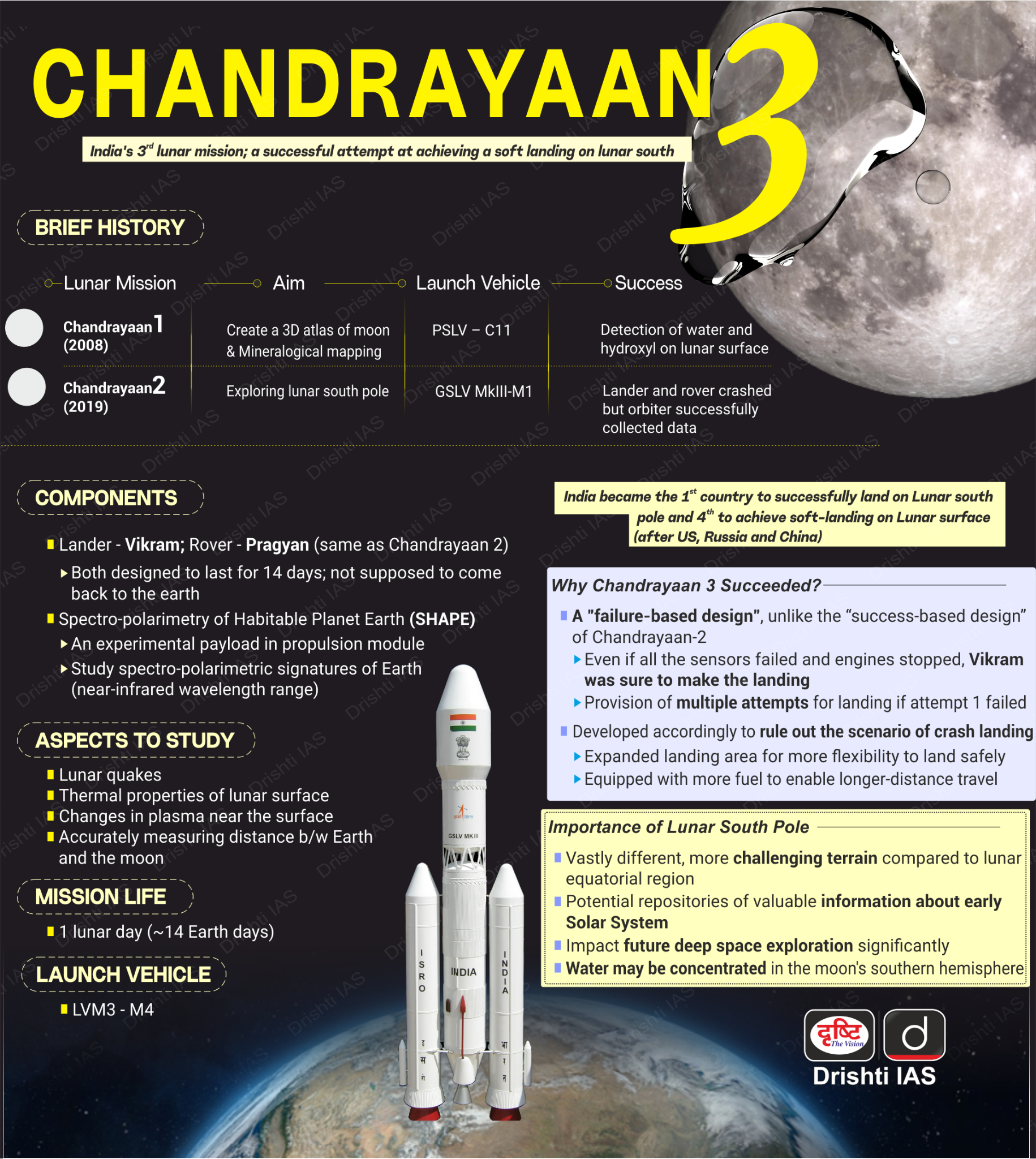Rapid Fire
Chandrayaan’s ChaSTE
- 05 Apr 2025
- 2 min read
India's Chandrayaan-3 mission’s ChaSTE (Chandra’s Surface Thermophysical Experiment) became the first-ever instrument to successfully measure subsurface temperature near the Moon’s south pole.
- ChaSTE was deployed by the Vikram lander after Chandrayaan-3's successful lunar landing in August 2023.
- The ChaSTE probe features 10 temperature sensors spaced 1 cm apart along its needle, with a rotation-based deployment mechanism, rather than a hammering one.
- The probe successfully descended up to 10 cm into the lunar surface and collected thermal data until September, 2023.
- The data suggested the presence of more water ice near the south pole than previously estimated, a crucial discovery for future lunar missions.
- ChaSTE’s success was attributed to its rotating probe mechanism, which proved more effective than the hammering technique used by earlier missions.
- Previous Missions: ESA's Philae lander (2014) couldn’t deploy the MUPUS (Multi-Purpose Sensors for Surface and Subsurface Science) thermal probe due to an awkward landing on comet 67P.
- NASA’s InSight (2018) on Mars also failed to gather subsurface data due to mechanical issues with the Heat Flow and Physical Properties Package (HP3) instrument.
| Read more: Chandrayaan-3 Successfully Lands on Moon's South Pole |





